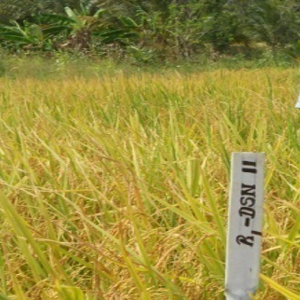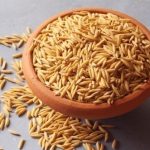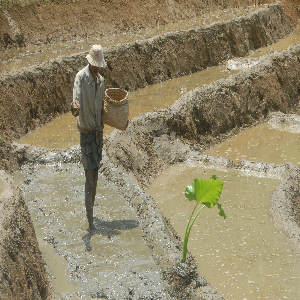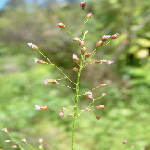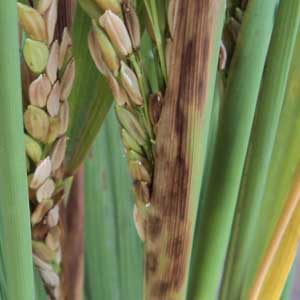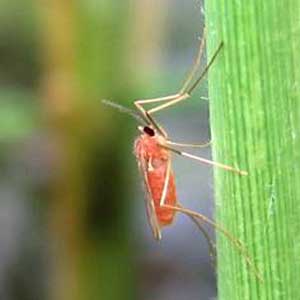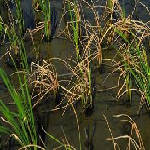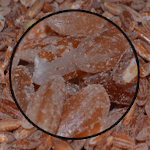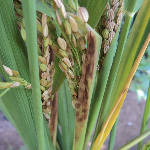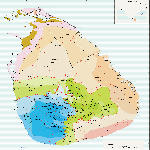
- Address : Bathalagoda, Ibbagamuwa, Sri Lanka
- E- Mail : rrdi@doa.gov.lk
- Telephone : +94 372 258561
- Fax : +94 372 259881
Welcome to Rice Research and Development Institute - RRDI
Other information @ RRDI

Technology
Recent technologies introduced...

Development
Training, information dissamination and technology transfer...

Research
Research that are being conducted at our institute

Other Services
Other services rendered to the public...

Maps
Recent map introduced...

Books
RRDI publication...
We are
RRDI is the centre for research and development targetted at improving rice crop in Sri Lanka. The institute is located at Batalagoda (Kurunegala district).There are 7 sub stations attached to the RRDI, which conducts research and development activities of regional importance.
Mission
To be the national center for development and dissemination of technologies aiming at improvement of the productivity and profitability of rice farming and the quality of rice.
Divisions
Following are the different technical and operational divisions within the RRDI.
Sub Stations
There are seven sub stations established under RRDI,
Contact Us
- Rice Research and Development Institute(RRDI) , Bathalagoda, Ibbagamuwa, Sri Lanka
- rrdi@doa.gov.lk
- +94 372 258561
- +94 372 259881
- Mon to Fri - 8.30 am to 4.15 pm (Closed on weekends and public holidays)
Rice Research and Development Institute (RRDI) is located in Batalagoda, Ibbagamuwa of Kurunegala district.( 7.53240N, 80.43400E).There are 7 sub research stations attached to the RRDI, Bombuwala, Ambalanthota, Labuduwa, Benthota, Sammanthurei, Paranthan and Murunkan.
The Director Rice Research and Development is responsible for overall research and administrative functions of the Institute. The Deputy Directors (Research) at Batalagoda, Bombuwela and Ambalantota look over the research activities at their respective centers/stations. Assistant Director of Agriculture(Research) is in charge at Bentota,Labuduwa,Samanthurei,Paranthan and Murukan look over research and administration activities at their respective research stations.
The Institute continues to play a major role in the country’s rice sector by releasing new high yielding rice varieties and introducing improved rice production technologies to help farmers realize the yield potentials. The research and development program at RRDI focuses on increasing farm productivity from current 4.3 t/ha to 5.0 t/ha within the next 5 years while reducing cost of production and improving grain quality of rice and special attention has benn given to promote organic agriculture.
In an effort to attain a quantum jump in rice yields, rice breeding program has been focused on developing varieties with a few tillers, sturdy culm and heavy panicles – a plant architecture designated as the new-plant type. Both traditional varieties and introduced lines from International Rice Research Institute are used in the breeding program.
Effort are made to develop techniques that help to increase rice plant’s nutrient use efficiency. Need base fertilizer application methods based on organic agriculture concepts of the country are being tested. This helps maximize effectiveness of inputs applied and reduce cost of production. Other agronomic practices to reduce production costs are being tested.
RRDI strive to bring about self-reliance in rice. The institute pursues this goal by consistently developing technology for obtaining high yield with excellent quality. DOA’s achievements in this rice field over the last 50 years, shown a ten-fold increase in rice production and a five and-a- half-fold increase in average yields. The increase in yield per unit area can be attributed to large-scale adoption of improved production technologies.
At present the country produces required amount of rice for consuption. However, to meet the growing needs of the population, it is necessary to produce more in the future. This is a serious challenge as several biotic, a biotic and social factors continue to limit the productivity, and the RRDI is forced to increase rice production with less land, labor and water and limited use of other resources.
The RRDI, therefore, continues to strengthen research and development activities on varietal improvement, soil fertility and its sustainability, pest, disease and weed management, post harvest and grain quality and production technologies.
History
Batalagoda is an ancient village which is located in Hiriyala, Hathpaththuwa in Kurunegala district. The ancient irrigation tank that provided irrigation water to the area including Batalagoda village was in dilapidated condition by late eighteenth century and it was improved by Mr. Parker, an engineer, in 1902. As a result, water supply to the area was assured enabling cultivation of paddy in the irrigation scheme continuously in both Yala and Maha seasons.
The land in which RRDI is situated at present, was owned by Mr. HamiduMuhandiram. The government acquired this land in 1929 and offered it to the Department of Agriculture. It was kept under the control of Wariyapola farm. By this time, rice varietal development and research were being conducted at the research center located at Mahailluppallama. As there was no assured water supply to the paddy fields in Mahailluppallama,the research on rice conducted there, faced many difficulties. Dr. Abeyrathne who was the Botanist in the Department of Agriculture at this period decided to shift the rice research program from Mahailluppallama to Batalagoda farm. Accordingly, Mr. Hector Weerarathne who conducted rice research at Mahailluppallama was transferred to Batalagoda and program was established at Balatagoda farm so that Mr. Weerarathne could carry out a sound research program with the assured water supply.
Honorable D.S. Senanayake understood the importance of the work that was performing at Batalagoda farm and paid attention to the requirement of an uninterrupted water supply to the farm. As a result, he ordered the Irrigation Department to issue water from Bathalagoda tank and to supply water only to Batalagoda farm from the tank when the water level of the tank reach 3 feet, assuring irrigation water supply to the farm.The Irrigation Department follows this order even today.
In 1952, Batalagoda farm was named as the Central Rice Breeding Center (CRBC). It was further strengthened by attaching research stations situated at Ambalanthota, Benthota, Bombuwela, Labuduwa, Samanthurei, Paranthan and Murunkan. The CRBC was again renamed as Rice Research and Development Institute in 1993.
In the beginning there was only the farm building and in 1982 a research building was built to facilitate scientific activities of RRDI. As well as in 2009 a training center and a hostel, which has the residential capacity for 70 personals were built to transfer the generated technologies efficiently. In 2016 a new administrative and research building complex was established in RRDI to provide an efficient service to the farmers
Address : Rice Research and Development Institute(RRDI),Bathalagoda, Ibbagamuwa, Sri Lanka
Email : rrdi@doa.gov.lk
Telephone : +94 372 258561
Fax : +94 372 259881
Open : Mon to Fri – 8.30am to 4.30pm (Closed on weekends and public holidays))

